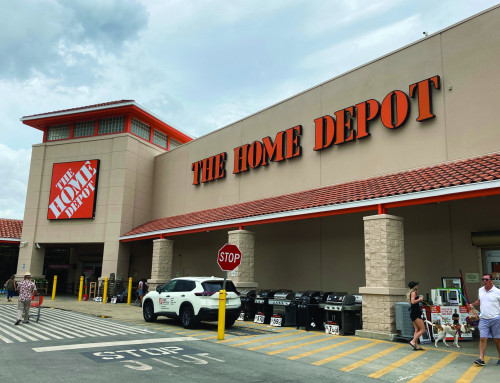Sales of previously occupied homes across the country increased last month to the fastest pace since February as lower mortgage rates helped pull more homebuyers into the market.
Existing home sales rose 1.2 percent in October from the previous month to a seasonally adjusted annual rate of 4.10 million units, according to new figures from the National Association of Realtors.
Sales climbed 1.7 percent compared with October last year. The latest sales figure topped the roughly 4.09 million pace economists were expecting, according to data firm FactSet.
Analysts say October’s home sales were likely limited by the federal government shutdown, which could have delayed some transactions that would have closed last month.
The national median sales price increased 2.1 percent in October from a year earlier to $415,200, an all-time high for any October on data going back to 1999. Home prices have risen on an annual basis for 28 months in a row.
The nation’s housing market has been in a sales slump since 2022, when mortgage rates began climbing from historic lows. Sales of previously occupied homes sank last year to their lowest level in nearly 30 years.
Sales have remained sluggish this year, running essentially flat compared to last year through the first 10 months of 2025, even though they got a boost this fall as the average rate on a 30-year mortgage declined to its lowest level in more than a year.
Even so, affordability remains a challenge for many aspiring homeowners after years of skyrocketing home prices. Uncertainty over the economy and job market are also keeping many would-be homebuyers on the sidelines.
That’s kept existing home sales stuck at around a 4-million annual pace going back to 2023. Historically, sales have hovered around 5.2 million a year.
Closing that gap will take a drastic increase in the number of homes on the market and a more meaningful decline in mortgage rates, said Lawrence Yun, NAR’s chief economist, whose 2026 forecast calls for a 14 percent increase in home sales.
“I don’t think we will get there next year,” Yun said. “We need 1 million more home sales to get us back to normal. I’m only looking at an additional half-million home sales next year.”
That shortage of homes for sale, especially in the more affordable end of the market, continues to weigh especially on first-time homebuyers, who don’t have home equity gains to put toward a new home purchase.
They accounted for 34 percent of homes sales last month. Historically, they have made up about 40 percent of home sales.
An annual survey of homebuyers by the NAR showed first-time buyers accounted for an all-time low 21 percent of home purchases between July 2024 and June 2025, while the average age of such homebuyers rose to a record-high of 40.
The Trump administration recently said it is considering backing a 50-year mortgage to help alleviate the home affordability crisis, though the announcement drew criticism from many economists and policymakers.
Homes purchased last month likely went under contract in August and September, when the average rate on a 30-year mortgage ranged from 6.63 percent to 6.26 percent, according to Freddie Mac.
The decline in mortgage rates accelerated in October, pulling the average rate down to 6.17 percent — its lowest level since Oct. 3, 2024.
It has ticked higher in recent weeks.
Home shoppers who can afford to buy at current mortgage rates are benefiting from a wider selection of properties on the market this year than a year ago.
There were 1.52 million unsold homes at the end of last month, down 0.7 percent from September and up 10.9 percent from October last year, the NAR said.
The latest inventory snapshot, however, remains well below the roughly 2 million homes for sale that was typical before the COVID-19 pandemic.
“To the degree pre-COVID conditions were more normal, we are still tight on inventory,” said Yun.
October’s month-end inventory translates to a 4.4-month supply at the current sales pace. Traditionally, a five- to six-month supply is considered a balanced market between buyers and sellers.








